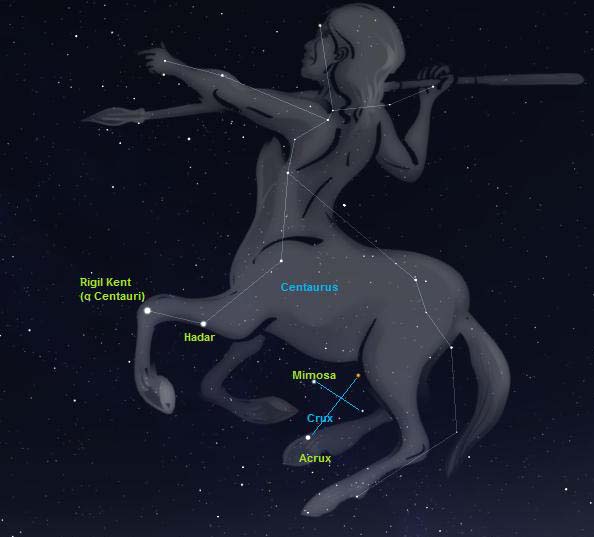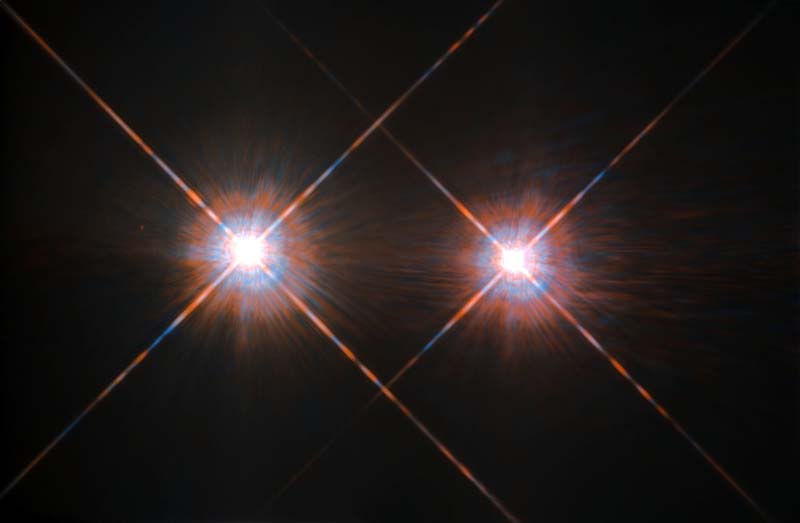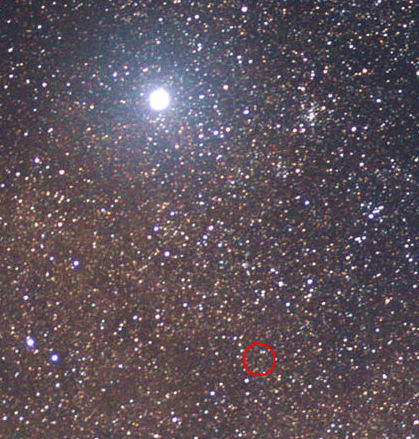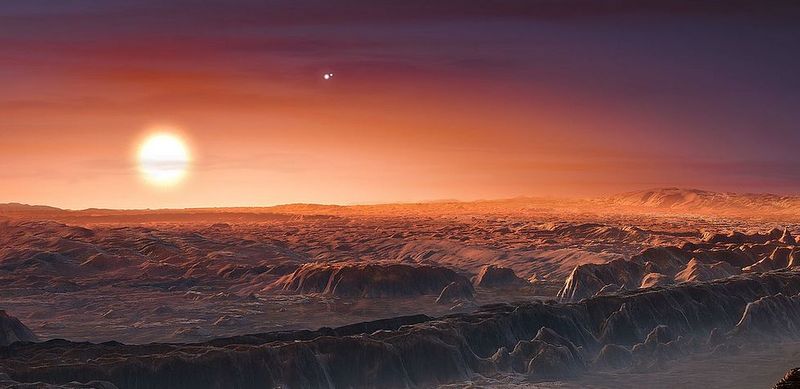As you may know from my blog, I think we may be alone in the Universe. But of course I would be more than happy if (intelligent) life would be found outside our own planet. My PC is taking part in the SETI project, see my blog Anybody out there? Last week there was excitement about a strong signal from a sunlike star, but: No alien signal, says SETI astronomer.
Numerous extrasolar planets have been found by now, as of 1 September 2016 the count was 3518. A few dozen of them might be able to support life (rocky, similar size to Earth, orbiting in the habitable zone of their star).
So, why did this Letter to Nature (one of the leading science magazines) : A terrestrial planet candidate in a temperate orbit around Proxima Centauri cause so much commotion that it became front page news in the media?
The answer is simple: Proxima Centauri is not just one of the hundreds of billion stars in our galaxy. It is the star closest to our Sun, at a distance of 4.22 lightyear “only“,
Let’s have a closer look at this nearest neighbour of the Sun. Where can we find it in the night sky? And can we see it with unaided eyes or binoculars?
Here is the night sky (in Malaysia) in March, south-eastern direction. You will notice three constellations, dominated by Centaurus. The name comes from Greek mythology, where a Centaur is a half-horse half-man creature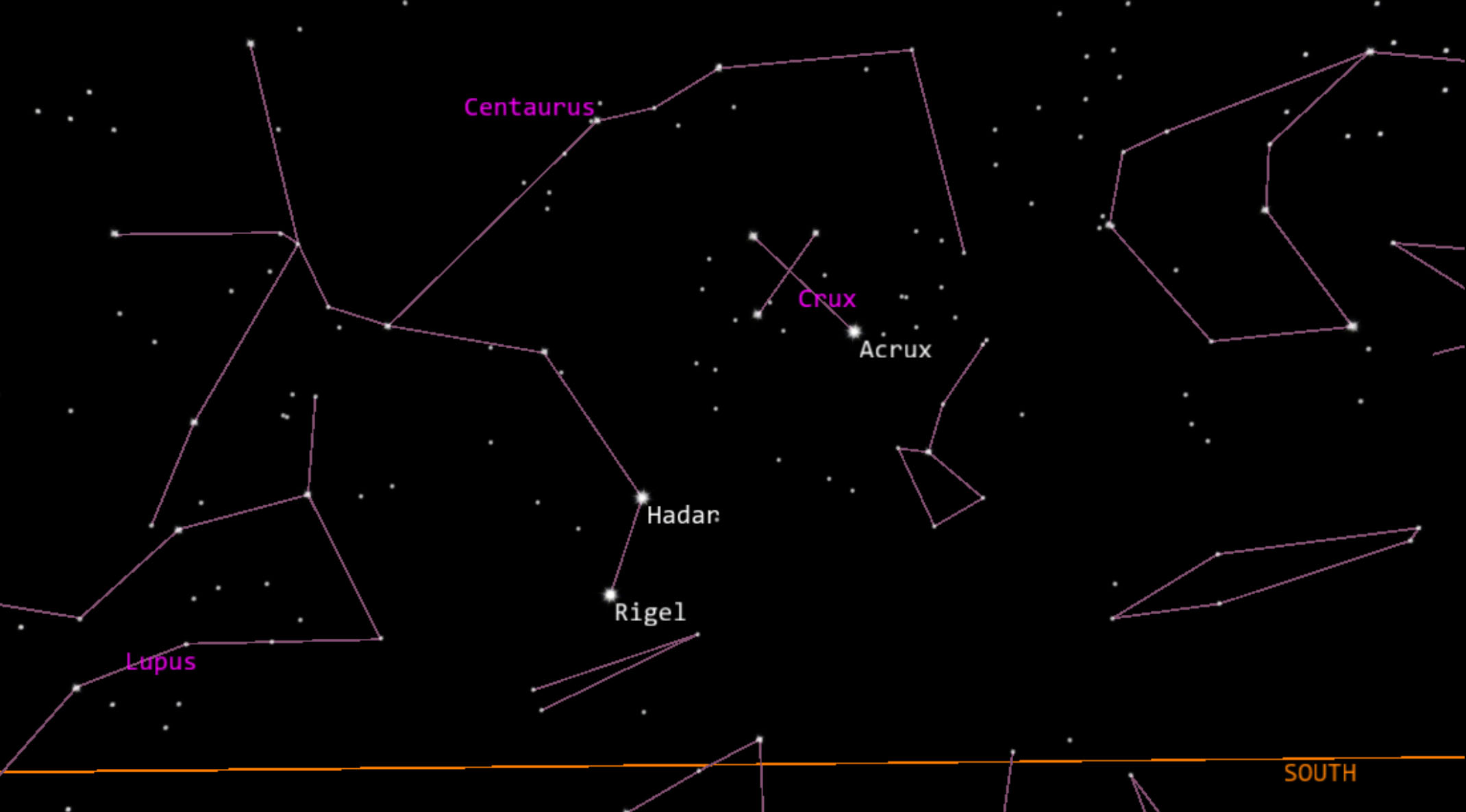
Here is how the Greek saw a Centaur in the stars.
You may find it difficult to see a centaur, but the two bright stars in his left leg are conspicuous. Rigel Kent, better known as α Centauri, is the third-brightest star in the sky, after Sirius and Canopus.
Hadar (β Centauri) is also a bright star.
α Centauri is actually a star system, consisting of three stars. Two of them, α Centauri A and B are so close that they can not be separated by the unaided eye. Here is an image taken by the Hubble telescope.
α Centauri A (to the left) is slightly larger than the Sun, while B is a bit smaller. They orbit around each other with a period of 80 years.
The third component, α Centauri C is a red dwarf, much smaller and cooler (more reddish) than the Sun. Very far away (about 0.21 ly) from the other two. If it is bound by gravitation to A and B (not 100% sure), the estimated orbiting period is ~ 500.000 year. Here are A and B (seen as one star here) and C (in the center of the red circle). The other stars are Milky Way stars, much farther away.
The α Centauri system is closer to the Sun than any other star, about 4.35 ly away, and of the three components, α Centauri C is a bit closer (4.22 ly) and therefore it has been named Proxima Centauri.
Because of the close distance, the system has been studied intensively. A planet might be orbiting α Centauri B, but even if found to be true, it will not be habitable.
Now a planet has been found, orbiting the red dwarf in the α Centauri system. It has been called Proxima b. Very close to the star, orbiting it in about 11 days only. Compare this with Mercury’s period of 88 days. But because the star is less bright than the Sun, the planet is still in the habitable zone. Here is an artist impression how the planet could look like. α Centauri A and B are also shown, as bright stars.
Our closest neighbour! But a distance of 4.22 light-year means that Proxima b is still 40 trillion km away from Earth. At this moment spacecraft New Horizon, after taking spectacular pictures of dwarf planet Pluto, is leaving our solar system with a respectable speed of ~ 60.000 km/h. That is fast, but it would take ~ 80.000 year to reach Proxima b.
Here is what the Mail Online reported on 24/8. “The second Earth that we could visit in our lifetime” and “just four light years away”
Actually there is an audacious plan to send a probe to Proxima b. Not a spaceship but a space-chip! Not one probe, but a swarm of them. Interested? The project is called .Breakthrough Starshot and it deserves a separate blog post.
Here only a few comments on the idea of a “second Earth”.
- As the planet orbits very closely to its Sun, it will probably be tidally locked, like Mercury. In that case the sun side will be scorching hot, the other side dark and freezing cold. Only the twilight zone might be able to support life
- Proxima Centauri is a flare star, with occasional eruptions of radiation, comparable but much stronger than the solar flares. Not very suitable for the development of life.
- Will there be water on Proxima b? Earth got its water during the Late Heavy Bombardment. when numerous comets and asteroids, disturbed in their orbit by the giant planets, collided wit Earth.
In this very readable Scientific American blog more skeptical arguments are given.
Here are a few other habitable planets. Proxima b is not yet in this list, it belongs to the bottom row, Proxima Centauri is a so-called M star
Kepler-452b (top row) is sometimes nicknamed Earth’s Cousin..:-) But the distance to Earth is a whopping 1400 light-year! It would take New Horizon about 25 million year to go there.
More about the Breakthrough Starshot project in a later blog post

